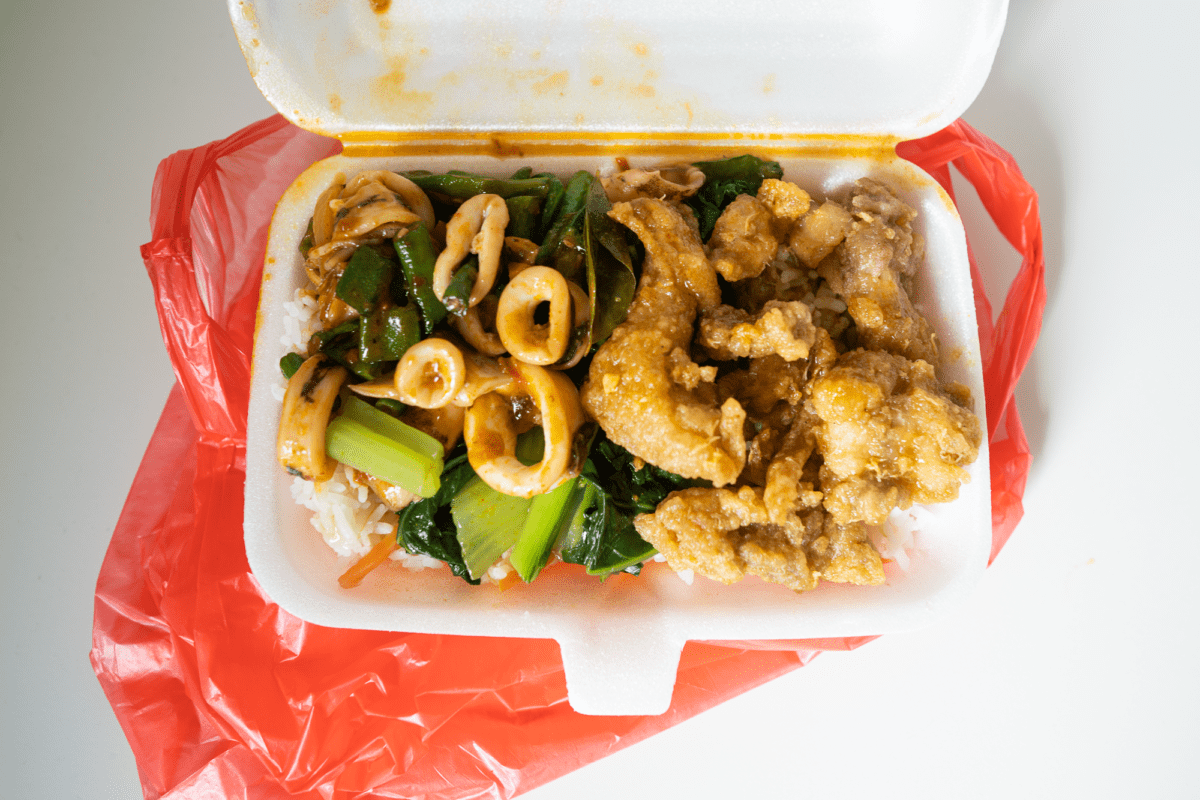This website is made possible by readers. I may earn a small commission when you buy through the links in this article at no extra cost to you. Learn more.
I grew up eating Economy Rice which is known in other names, such as mixed vegetable rice. It's also known as cai png in Hokkien or cai fan (菜饭) in Chinese, which is a direct translation of “vegetable rice”.
What is Economy Rice or Cai Png?
It is essentially a plate of rice, topped with selected ingredients, and often, gravy or curry drizzled on top. The places that serve economy rice usually comes in the form of a food stall at a hawker center or food court.
Economy rice is not unique to Singapore, with similar variations existing in many South-East Asian countries, such as the Cơm Bình Dân in Vietnam. While certain dishes like Nasi Lemak or Hainanese Curry Rice have a similar concept of a few ingredients served with rice, they are not regarded as Economy Rice. However, Economy Rice lovers would likely find those variations familiar.
I make an exception for Economy Bee Hoon, which is usually sold in the mornings at the same store. The distinct difference is the choice of carbs, which you can usually choose between mee (yellow noodles), bee hoon (rice vermicelli), or kway teow (flat rice noodles). Another difference is the choice of sides available are those regarded in Singapore as breakfast sides, such as sunnyside egg, luncheon meat (spam), squid cutlet, or chicken wing.

What dishes can you choose with Economy Rice?
The beauty about Economy Rice is that you get to choose the dishes that go on top of your rice, so in that sense, it's customized to each person's taste. However, there are some dishes that are commonly found in many Economy Rice stalls.
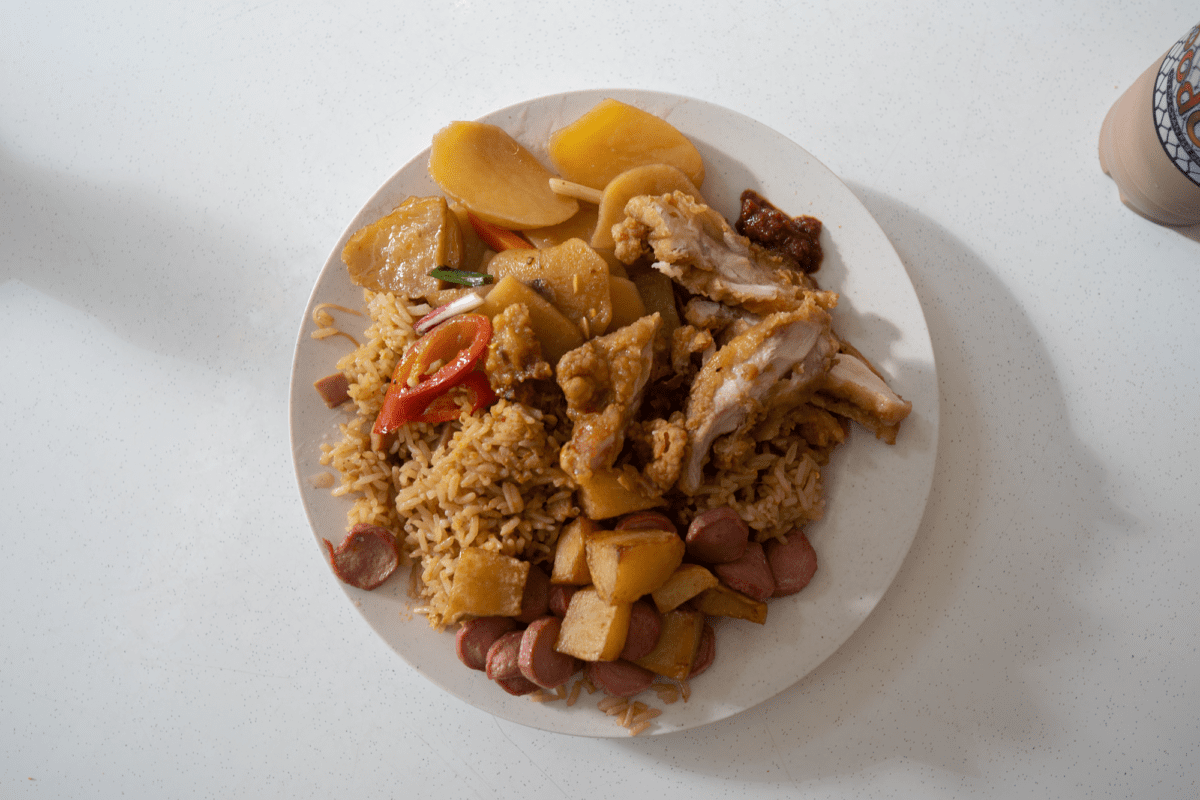
Here are some of my staple choices.

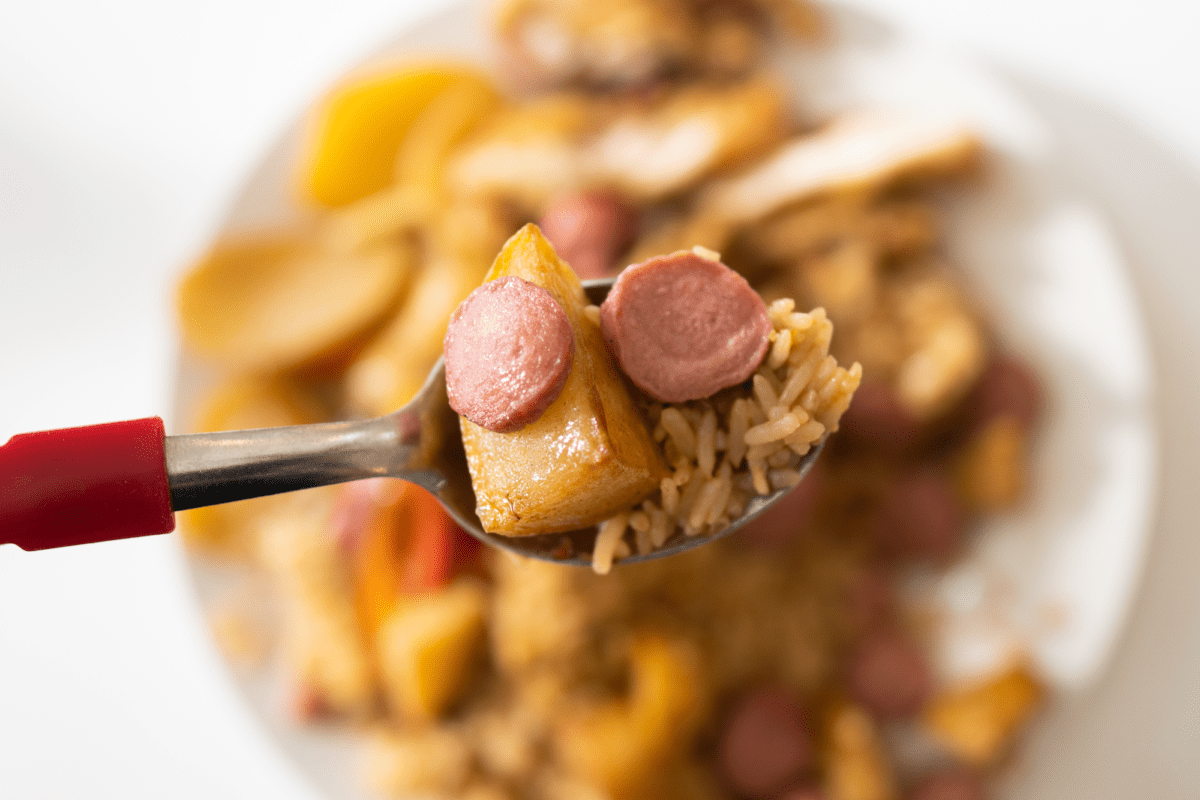
From a cost perspective, this is a poor choice, since it is charged as a meat dish even though it's half potato. However, I just love the combination of fried potato and sausages.
How to Order Economy Rice
The anatomy of Economy Rice store is same no matter where you go. This is how you order:
- The first thing you want to convey is whether you have to eat in or take out.
- Some customers would order for their entire family or colleagues, so you are usually expected to indicate how many plates or packets of food you need. If the ingredients for each packet can be the same, you should say so at this point, so you don't have to choose all over again for each plate or packet.
- Then you point to the dishes you want. It's often hard to instruct them based on the exact name of the dishes since they are not written anywhere. So what most would do is to point at the dish (some of my friends affectionately refer to Economy Rice as “point point”). Most of the time, the dishes are placed close to each other, so just pointing won't suffice, and you would need to state the most obvious ingredient.
- The staff would then tabulate the total cost and you'll make payment. It will be hard to verify the cost since the price of each dish is not usually clear. Generally speaking, dishes that contain meat, even a small amount, will be considered as a meat dish and cost more. If you pick dishes that have a more premium ingredient, such as a whole fish, it might cost even more at around $4-6 per dish. Usually, the staff will let you know if a dish you pick would cost relatively higher than the rest.
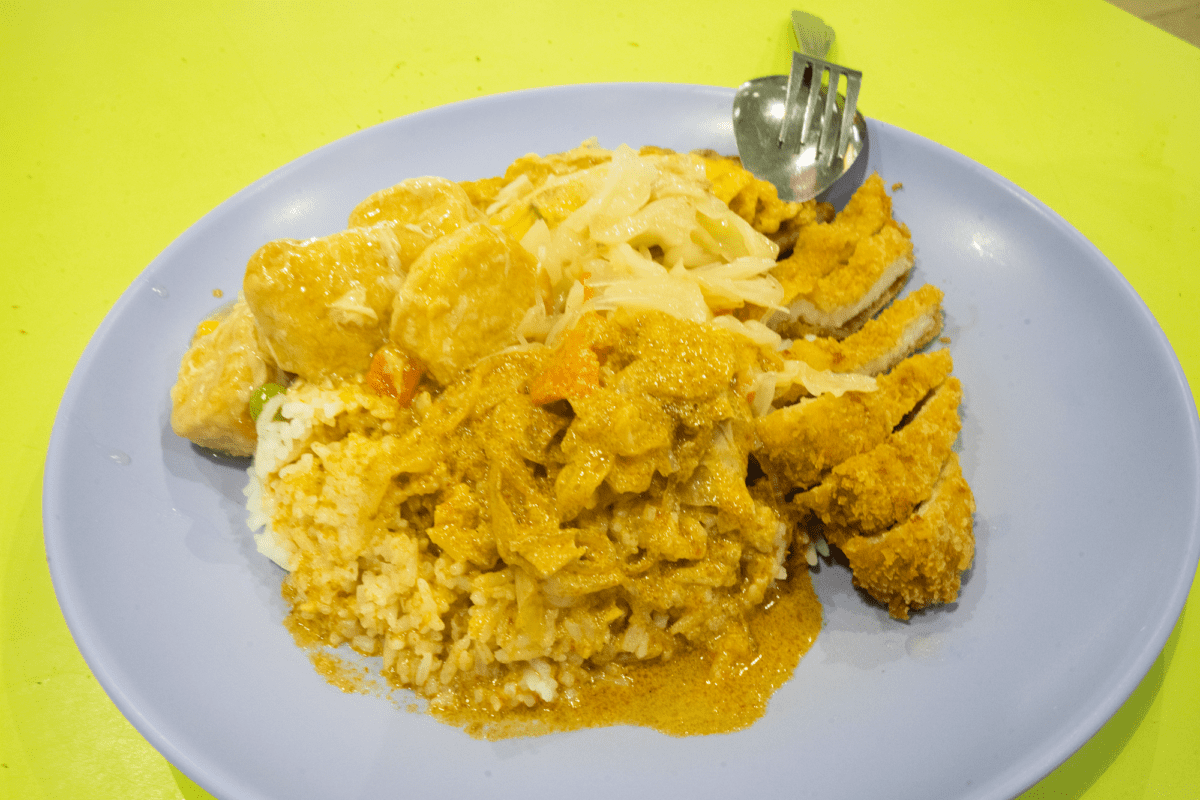
How to Order “Cai Fan” like a Pro
Want to take ordering to the next level? A post by an unidentified author first shared in 2012 details an economy rice ordering hack that lets you maximize the amount of you get like a pro.
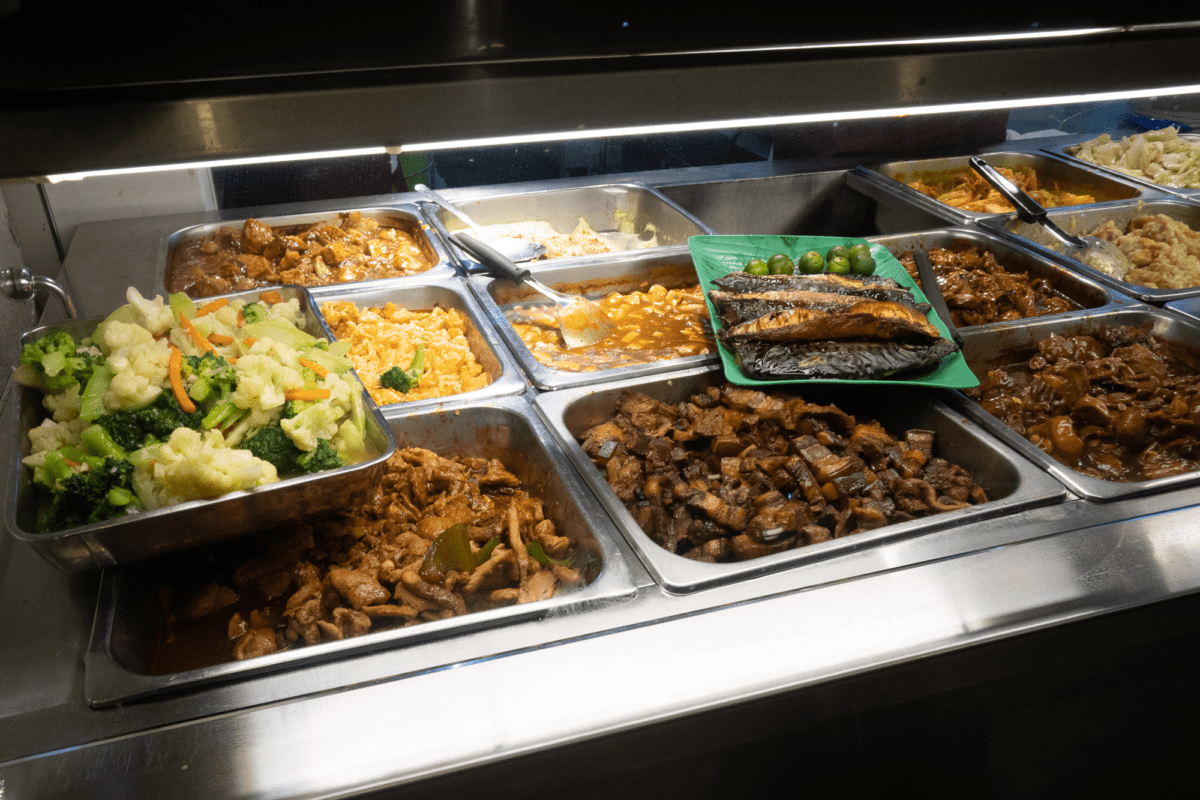
- Order the meat dishes first. The person will not think you are a cheapskate and give you a larger portion.
- When ordering, point at the dish as many times or as long as you can. The person will subconsciously give you more.
- Don't rush when ordering. Give the person some time to scoop your dish before pointing to the next dish. This is because if you are in a rush, the person will scoop a lesser portion and move on to the next dish.
- Say “more rice” instead of “add rice”. The person will probably give you more rice and not charge you.
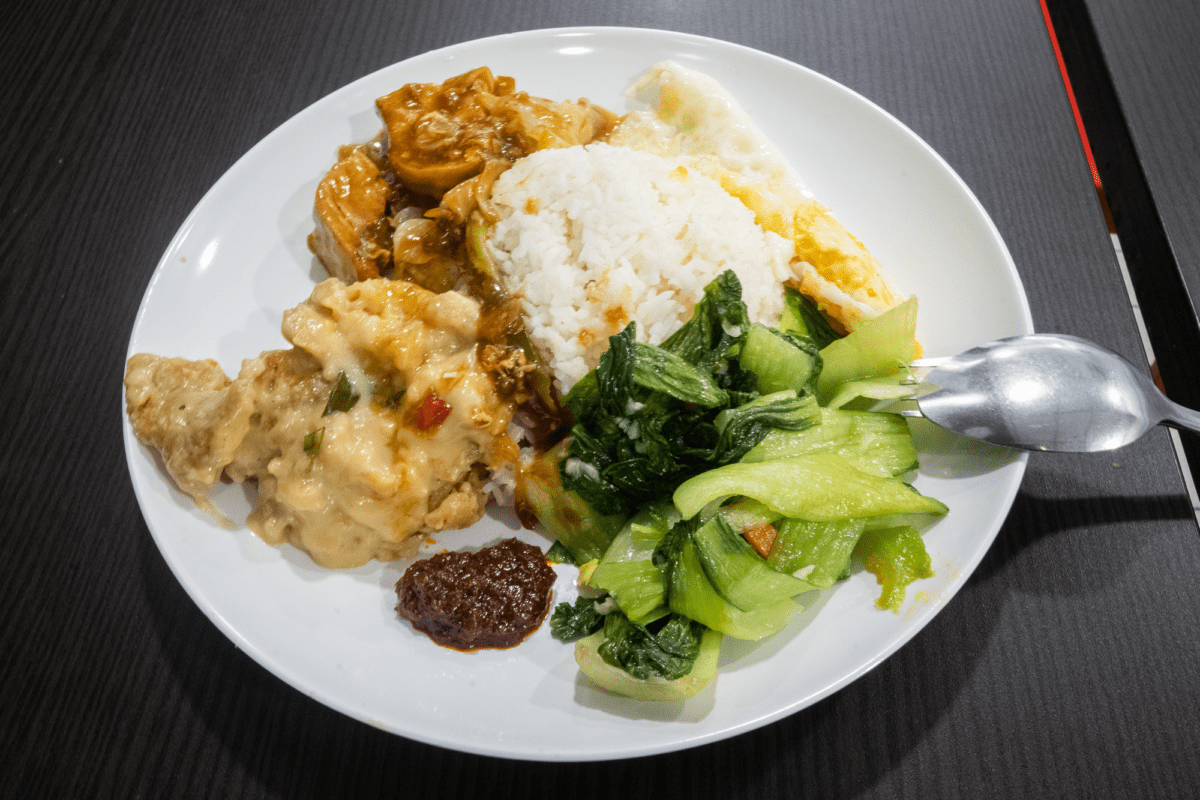
Some additional tips from my own experience
This used to be an ad.
But no one likes ads, so I got rid of them. If my articles helped you, I ask for your support so I can continue to provide unbiased reviews and recommendations. Every cent donated through Patreon will go into improving the quality of this site.
- Try to avoid dishes with just a sprinkle of meat, such as the potato and sausage dish. Half of it is sausage but will be counted as a full meat dish. Instead, go for dishes that are pure meat.
- Eating in will likely give you more volume since the space in a packet is limited. Ordering more than three dishes will likely cause the person to give you less for the last dish to fit into the pack.
- If you need to take away, ordering the meat dish first would ensure you don't lose out.
- Gravy or curry to top off your order is free, so be sure to ask for it. Chilli is also usually provided but you would have to put it in on your own.
- Don't count on the gravy or sauces staying in the packet. Expect spillage and be careful when taking it out. I would usually leave the plastic bag at the bottom as a table mat.
